On March 22, 2023, the Expert Working Group for Research on Evaluation and Management System of Competitions in Colleges and Universities of the Chinese Society of Higher Education released the 2022 Analysis Report on College Student Competitions in National Ordinary Colleges and Universities (hereinafter referred to as the "Analysis Report"), which contains 13 lists of college student competitions in ordinary undergraduate colleges, 11 lists of college student competitions in higher vocational colleges and universities, and 3 lists of college student competitions in provinces (Attachment 1).
On September 30, 2022, the Chinese Society of Higher Education issued the Notice on Calling for College Student Competitions, and through voluntary declaration by competition organizers, formal review by the expert working group, preliminary review on the Internet and review at the meeting, a total of 26 undergraduate independent competitions, 1 sub-series and 2 higher vocational competitions, totaling 29 new items were included in the "Analysis Report on College Student Competitions of General Undergraduate Colleges and Universities of the Country 2023 A total of 26 undergraduate independent events, 1 series of sub-events and 2 senior vocational events, with a total of 29 items newly listed in the Competition Catalog of "2023 National General College Student Competition Analysis Report" (Attachment 2); 33 undergraduate events and 1 senior vocational event, with a total of 34 items included in the Observation Catalog of "2023 National General College Student Competition Analysis Report" (Attachment 3).
The collection and research work of the competition focuses on the "four new" construction and the development of vocational education, and dynamically adjusts the events in the list to empower quality improvement. The Analysis Report follows the principles of fairness, impartiality and openness, and adheres to the working idea of "quality-oriented and prudent promotion", and calculates based on the data related to the contribution of each university in terms of awards, organizational contribution and research contribution.
According to statistics, a total of 1,207 undergraduate colleges and universities in China have been included in the Analysis Report. Harbin Institute of Technology topped the list, Xi'an Jiaotong University and Huazhong University of Science and Technology ranked 2nd and 3rd, and the 4th to 10th were Wuhan University of Technology, Wuhan University, Zhejiang University, Northeastern University, University of Electronic Science and Technology, Southwest Jiaotong University, and Chongqing University.
In the distribution of school type, science and technology colleges and universities performance is eye-catching, there are 70 into the top 100, 159 into the top 300; followed by comprehensive colleges and universities, there are 23 into the top 100, 78 into the top 300; again is the teacher training colleges and universities, there are 5 into the top 100, 30 into the top 300; agriculture and forestry 2 into the top 100, 18 into the top 300; humanities and social sciences and medicine class temporarily no colleges and universities into the top 100, only 13 into the top 300. The results also show that the "double first-class" construction colleges and universities have remarkable achievements in the list, 105 "double first-class" construction colleges and universities entered the top 300, of which 61 institutions entered the top 100. 224 local institutions entered the top 300, and 224 local institutions entered the top 100. The results also show that "double first-class" construction colleges and universities have remarkable achievements in the list, 105 "double first-class" construction colleges and universities entered the top 300, of which 61 institutions entered the top 100. 224 local institutions entered the top 300, of which 53 institutions entered the top 100.
Regionally, the eastern region has a clear advantage, scoring 42.63% of the total, the central region 23.80%, the western region 22.95%, and the northeastern region 10.62%. Among the provinces in the eastern region, except for Hainan Province, which accounts for 1.40% due to the small number of colleges and universities, the contribution of other provinces ranges from 5.41% to 16.31%; the contribution of the provinces in the central region ranges from 9.69% to 24.04%; the contribution of the provinces in the western region varies greatly, with the lowest one accounting for only 1.26%, and the highest one reaching 19.41%, which suggests the "imbalance" of the western region. The contribution of provinces in the western region varies greatly from 1.26% to 19.41%, suggesting the "unbalanced" situation in the western region. In the northeast region, Liaoning, Jilin and Heilongjiang provinces contribute 45.13%, 27.99% and 26.88% respectively.
From the point of view of the provincial universities into the top 300 list, into the top 3 of the number of colleges and universities: Jiangsu Province (25), Zhejiang Province (22), Shandong Province (21), into the number of colleges and universities accounted for the top 3 are: Chongqing (40.00%), Zhejiang Province (37.93%), Shanghai (35.90%); from the point of view of entering the top 100 list, into the number of colleges and universities of the top three are: Jiangsu Province (13), Beijing Municipality (8), Zhejiang Province and Sichuan Province tied (7), and the top 3 in terms of the percentage of the number of entering colleges and universities are: Jiangsu Province (16.88%), Shanghai Municipality (15.38%) and Sichuan Province (13.46%).
The Analysis Report included a total of 1,145 higher vocational colleges and universities across the country (vocational universities were included in the calculation of the higher vocational list). Shenzhen Institute of Vocational Technology tops the list, Jinhua Institute of Vocational Technology and Chongqing Electronic Engineering Vocational College are No. 2 and No. 3, and No. 4 to No. 10 are Wuhu Institute of Vocational Technology, Lanzhou Petrochemical Vocational and Technical University, Guangdong Institute of Light Industry Vocational and Technical College, Wuhan Institute of Software Engineering Vocational College, Nanjing University of Industry Vocational and Technical University, Jiangxi Institute of Environmental Engineering Vocational College, and Zhengzhou Railway Institute of Vocational and Technical College, respectively.
From the type of higher vocational schools, 55 enter the top 100 and 163 enter the top 300 in science and technology; 29 enter the top 100 and 80 enter the top 300 in general; 12 enter the top 100 and 42 enter the top 300 in humanities and social sciences; 4 enter the top 100 and 12 enter the top 300 in agriculture and forestry; 3 enter the top 300 in teacher training; and no university enters the top 300 in medicine. In terms of the level of higher vocational schools, 36 high-level higher vocational schools in the construction of "Double-High Program" (A grade, B grade and C grade) entered the top 100 and 53 entered the top 300; 35 high-level professional group construction higher vocational schools (A grade, B grade and C grade) entered the top 100 and 97 entered the top 300. There are 35 high level professional group construction high vocational schools (A grade, B grade and C grade) in the top 100 and 97 in the top 300.
Regionally, the score of the eastern region accounts for 40.15% of the total score, the central region is 28.41%, the western region is 25.80%, and the northeastern region is 5.64%. Among the 10 provinces in the eastern region, Jiangsu Province, Shandong Province, Guangdong Province and Zhejiang Province contribute a relatively high percentage of 18.85%, 16.86%, 16.20% and 12.78% respectively, while the rest of the provinces contribute between 2.61% and 9.38%; the contribution of 6 provinces in the central region ranges from 10.28% to 20.12%; and that of 12 provinces in the western region varies greatly, with the highest percentage reaching 20.12%. The contribution of 12 provinces in the western region varies greatly, with the highest reaching 18.45% and the lowest only 0.59%; the contribution of 3 provinces in the northeastern region is relatively balanced, with Liaoning, Heilongjiang and Jilin provinces contributing 44.86%, 32.97% and 22.17% respectively.
From the point of view of universities entering the top 300 in each province, the top 3 in terms of the number of entering universities are: Jiangsu Province and Shandong Province tied (27), Zhejiang Province (23), and Guangdong Province (21), and the top 3 in terms of the percentage of the number of entering universities are: Zhejiang Province (45.10%), Tibet Autonomous Region and Chongqing Municipality tied (33.33%), and Shandong Province (31.40%). In the top 100 list, the top 3 in terms of the number of colleges and universities entered are: Zhejiang Province (11), Jiangsu Province (8), Guangdong Province, Anhui Province, Jiangxi Province and Chongqing Municipality tied (7), and the top 3 in terms of the percentage of the number of colleges and universities entered are: Zhejiang Province (21.57%), Chongqing Municipality (15.56%), and Guangxi Zhuang Autonomous Region (12.24%).
The Analytical Report will be released simultaneously on the official website of the Chinese Society of Higher Education (https://www.cahe.edu.cn) and its WeChat public number, as well as on the National Platform for Student Competition and Teacher Development in Colleges and Universities (http://rank.moocollege.com).
The Analysis Report will be presented at the 58th-59th China Higher Education Expo "Forum on Teaching Development and Cultivation of Innovative Talents in Colleges and Universities", which will be held on April 8-10, 2023 in Chongqing.
附件1:全国普通高校大学生竞赛榜单一览表


附件2:《2023全国普通高校大学生竞赛分析报告》竞赛目录



附件3:《2023全国普通高校大学生竞赛分析报告》观察目录

附件4:全国普通高校大学生竞赛榜单(本科)





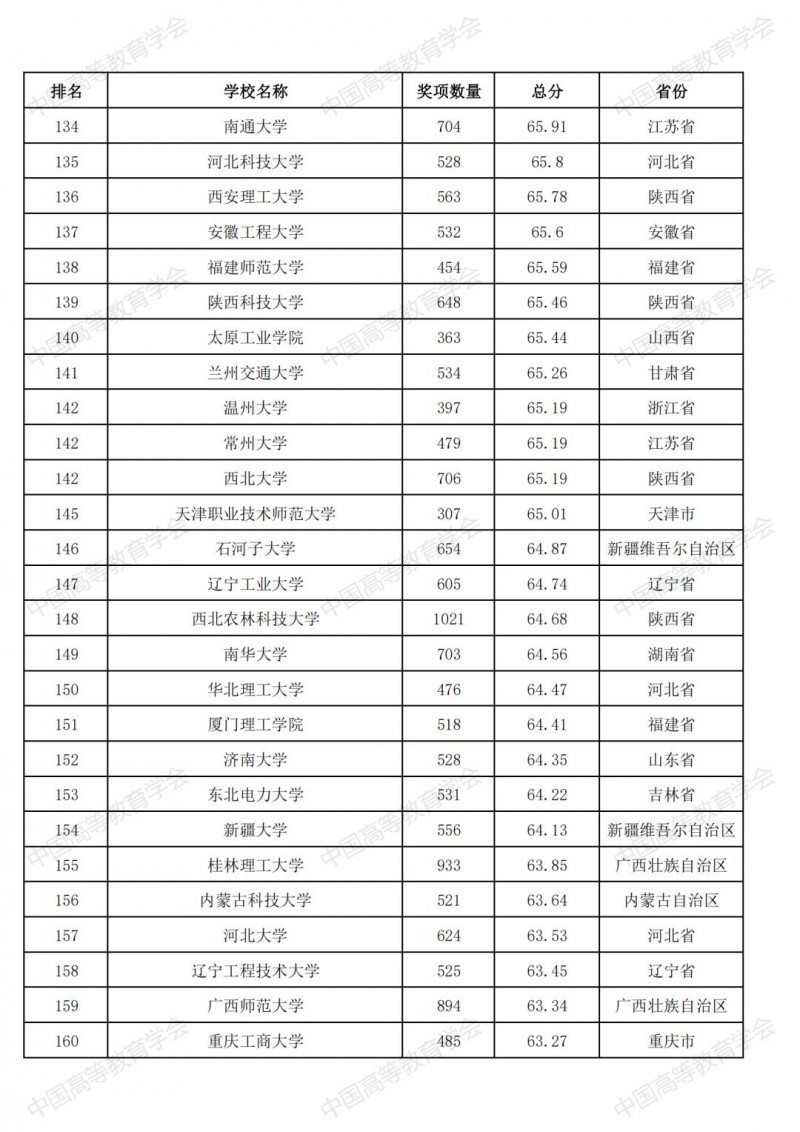

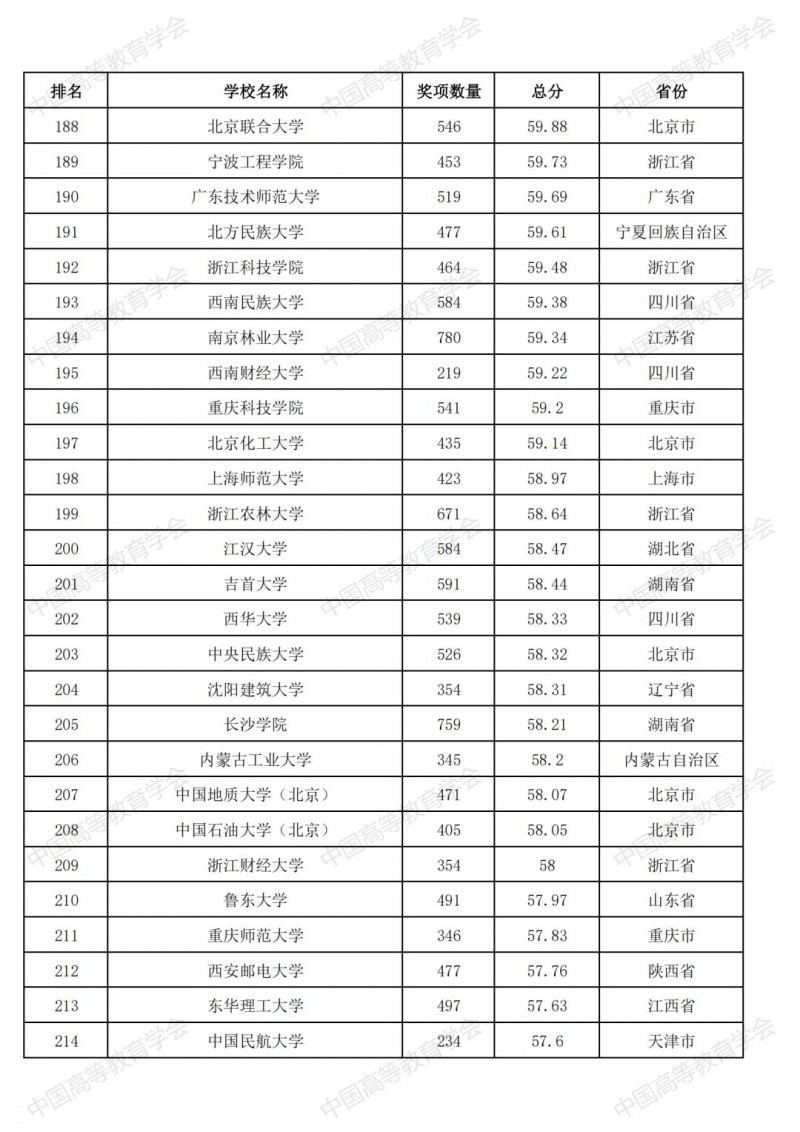


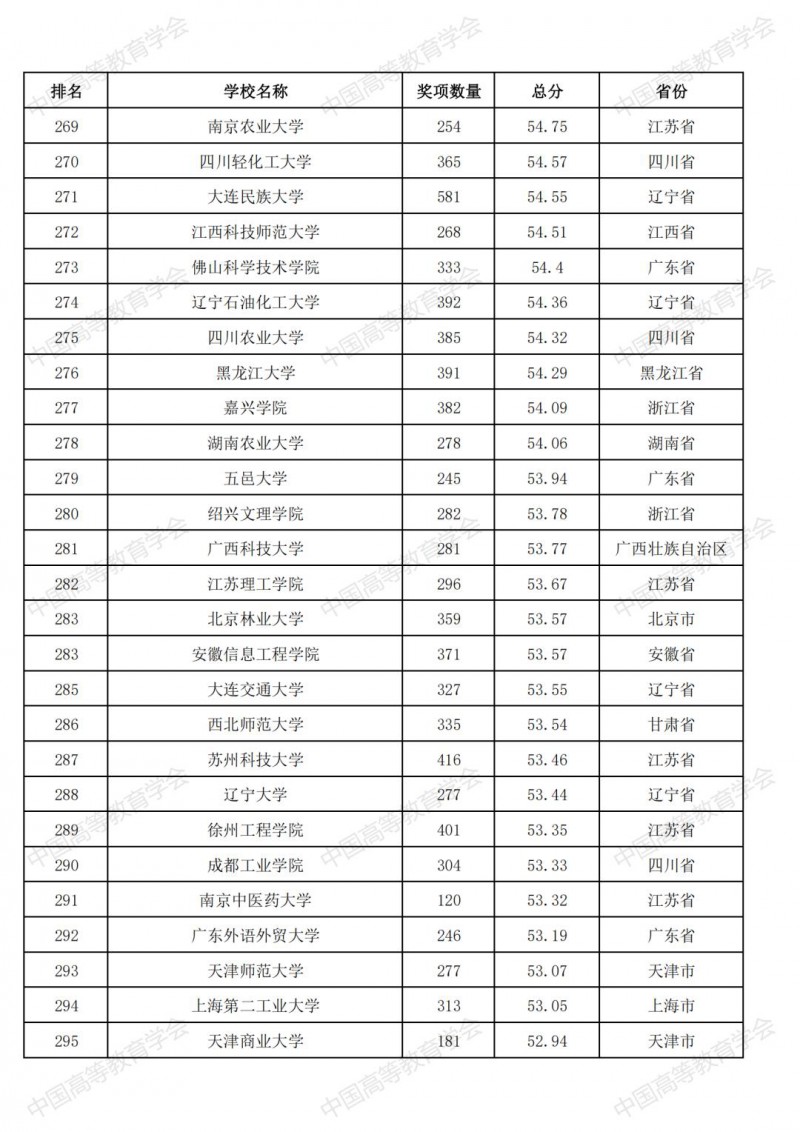
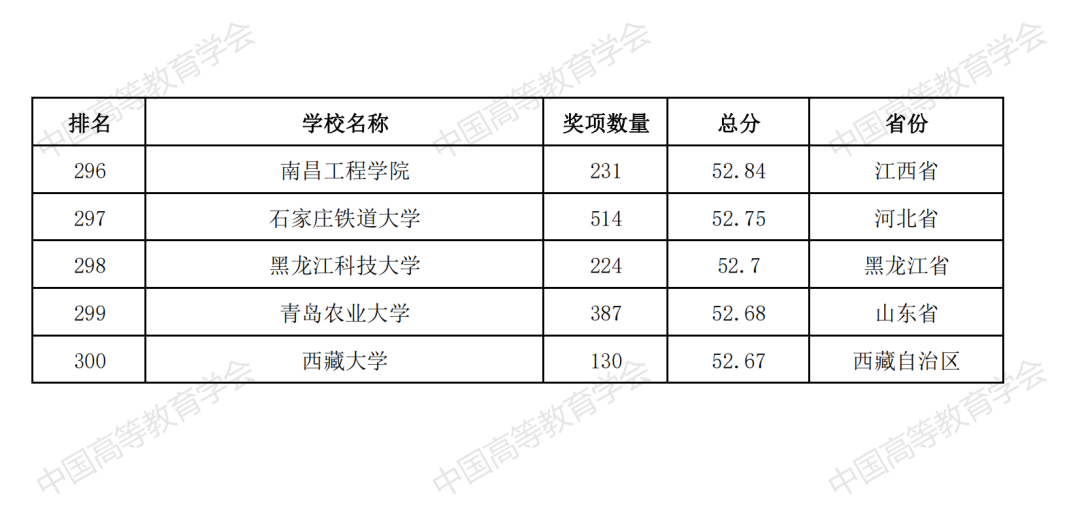
完整榜单下载,请点击阅读原文
附件5:全国普通高校大学生竞赛榜单(高职)


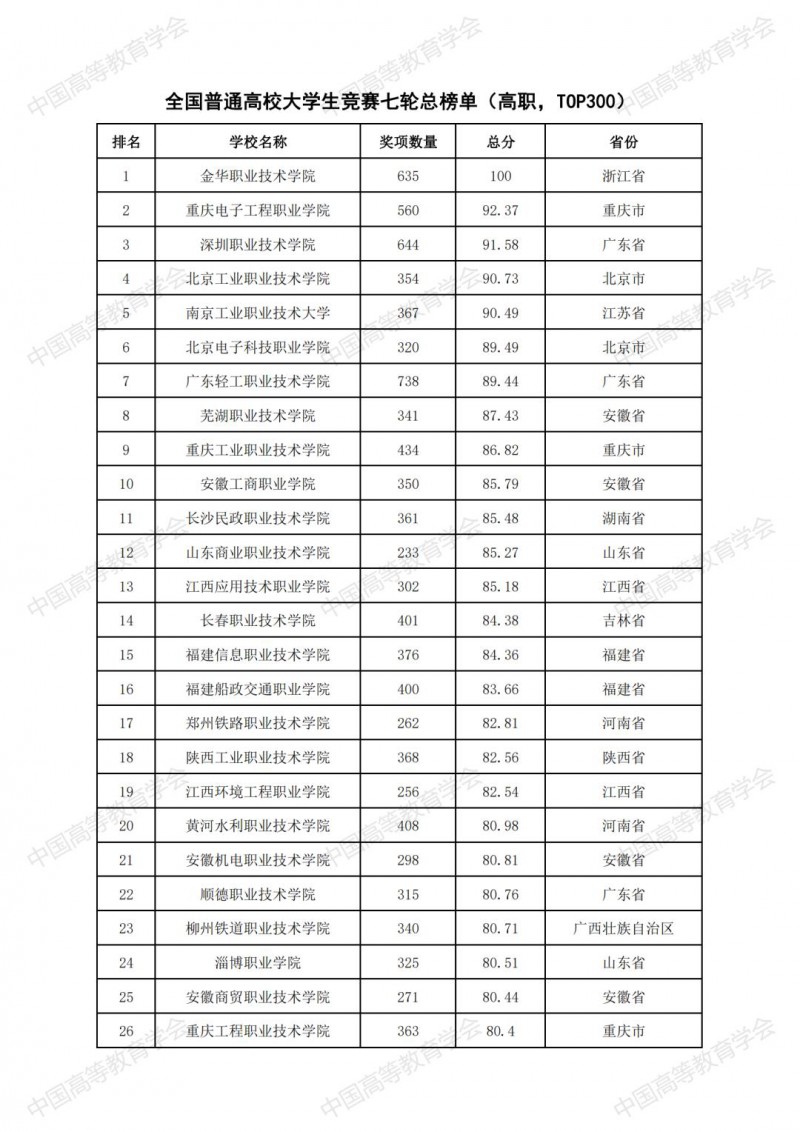





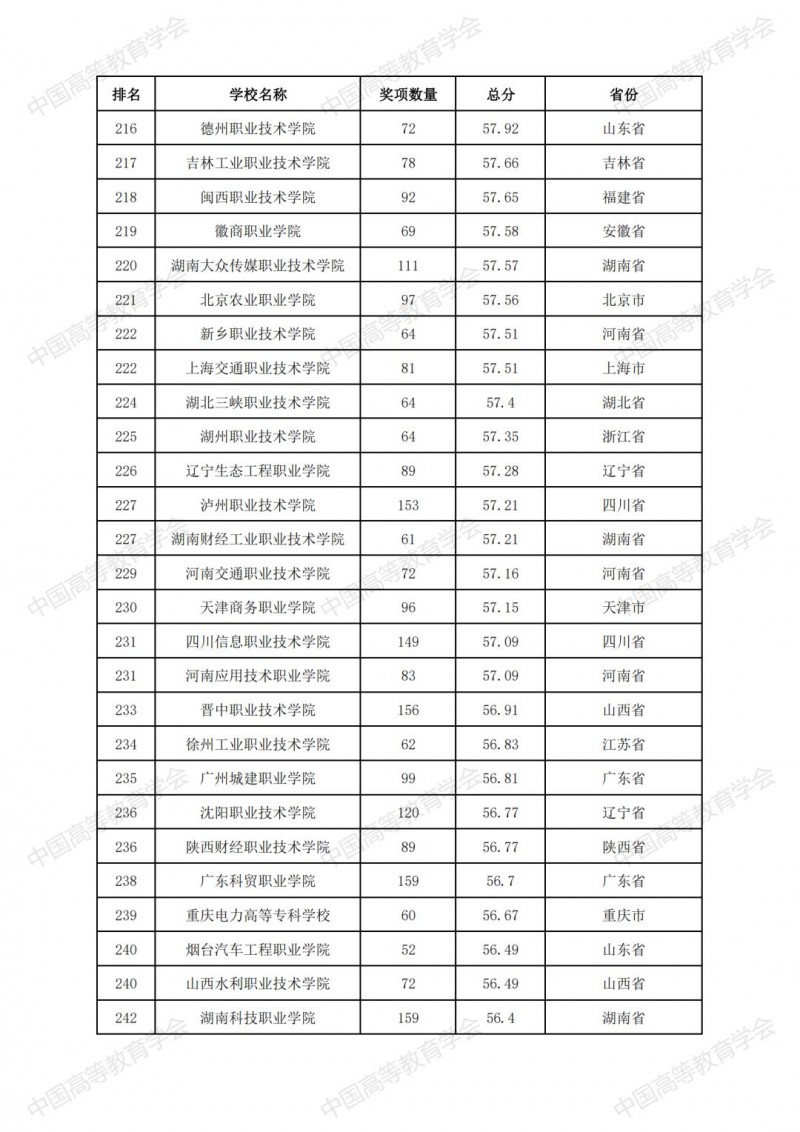



完整榜单下载,请点击阅读原文
附件6:全国普通高校大学生竞赛榜单(省份)

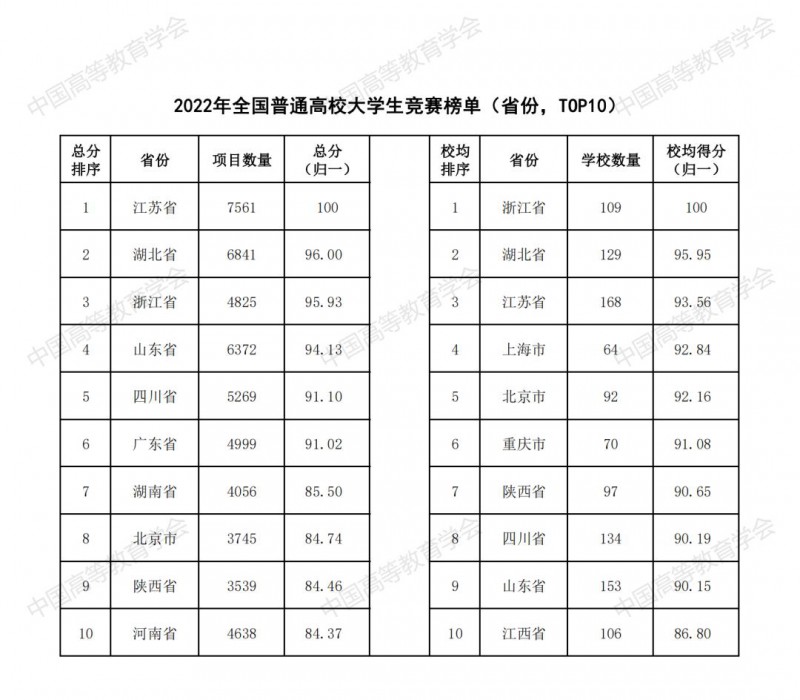

内容来源:中国高等教育学会官方微信号,版权归原创者所有。
版权声明:除非无法确认,都会标明作者及出处,如有侵权烦请告知,会立即删除并表示歉意。
Related Reading
Recommended articles
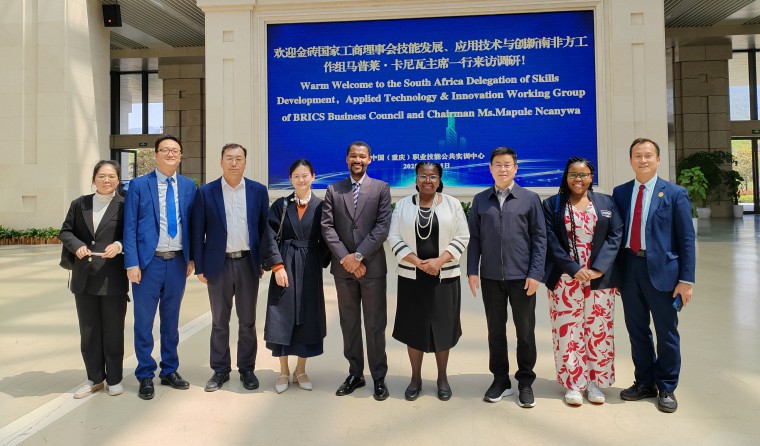



Popular articles



 闽ICP备12331232468号-1
闽ICP备12331232468号-1